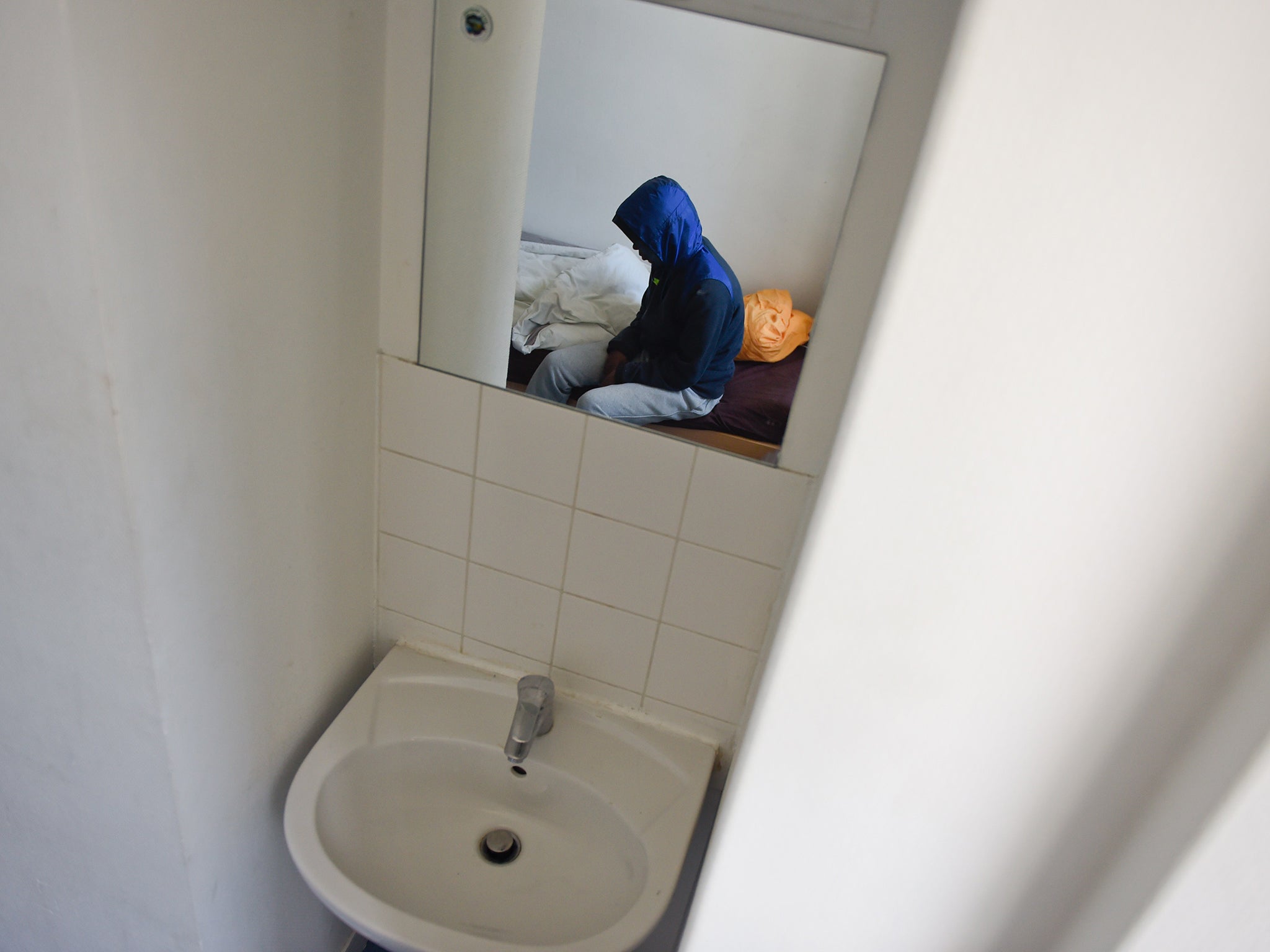Self-harm rate among children in custody soars by 37% in three years, figures show
Exclusive: Analysis of figures shows self-harm incidents in secure training centres and secure children's homes up 159 per cent between 2014-2017 despite population dropping by a third

Your support helps us to tell the story
From reproductive rights to climate change to Big Tech, The Independent is on the ground when the story is developing. Whether it's investigating the financials of Elon Musk's pro-Trump PAC or producing our latest documentary, 'The A Word', which shines a light on the American women fighting for reproductive rights, we know how important it is to parse out the facts from the messaging.
At such a critical moment in US history, we need reporters on the ground. Your donation allows us to keep sending journalists to speak to both sides of the story.
The Independent is trusted by Americans across the entire political spectrum. And unlike many other quality news outlets, we choose not to lock Americans out of our reporting and analysis with paywalls. We believe quality journalism should be available to everyone, paid for by those who can afford it.
Your support makes all the difference.Rates of self-harm among children in custody have soared by 37 per cent in three years, fuelling concerns that there is a lack of support for vulnerable people in the youth justice system.
An analysis of government figures shows there were 108 incidents of self-harm for every 100 young people in custodial settings – which include those in young offenders institutions (YOIs), secure training centres (STCs) and secure children’s homes – in 2016-17, compared with 79 per 100 in 2013-14.
The rise was particularly stark in STCs and secure children’s homes, which accommodate young offenders aged between 12 and 17 who are deemed to be the most vulnerable.
Self-harm incidents increased by 159 per cent, from 306 to 794, despite the number of youths in these facilities falling by 32 per cent, from 390 to 267.
Campaigners said the rise could be attributed to a shortfall in mental health support in youth custodial settings, as well as austerity cuts to children's services in the community.
Shadow justice secretary Richard Burgon said the figures were deeply troubling. "Far too many children are being sent to custody when what they really need is help and support, including for their mental health," he said.
"The state has a special responsibility for children in its custody and this situation cannot be allowed to continue.”
Recent Ofsted reports have raised concerns about self-harm in STCs, with one citing a lack of detail and rigour in practices in measuring young offenders’ mental health, and another noting there is not enough account of trends in behaviour which could lead to self-harm.
The Independent reported a year ago that children in custody were facing a significant shortfall in mental health provision as a result of reduced services in STCs, with some given no access to psychology services and having to wait more than half a year for treatment.
Carolyne Willow, director of children’s rights charity Article 39, described the rise as appalling but not surprising, saying it was inextricably linked to the waning support for disadvantaged children in the community, which she attributed largely to austerity.
She cited a report published by the National Audit Office (NAO) this week which warned that more children in the community were being exposed to neglect and abuse as local authorities struggle to meet demand.
Ms Willow said: “The wider critique of how austerity is impacting on children in the community needs to be applied to those who end up in custody, because here we consistently see extreme forms of unmet need.
“It’s appalling that so many children are in the most serious way showing that they’re profoundly distressed and in need of adult help, but they are locked alone in cells for up to 22 or 23 hours a day.
“Prison is no place for children. They need to be in a completely different environment where they have skilled and supported professionals who can meet their needs.”
Andy Bell, deputy chief executive of the Centre for Mental Health, said the figures could be explained in part by the fact that because the youth custody population had been reduced – from 3,000 in 2010 to approximately 1,000 today – the levels of vulnerability were higher than ever.
“There are thankfully fewer children in custody now than there used to be, but now we need to ensure that we take the opportunity of a vulnerable child being in a secure setting to provide them with the most effective support possible and prioritise their safety and wellbeing," he said.
A Ministry of Justice spokesperson said: “The number of children entering the youth justice system continues to decline and as a result a higher number of those in custody have complex needs and might be prone to self-harm.
“We have responded to this by putting 300 frontline staff through degree-level specialist training and have employed additional psychologists and support staff for the most vulnerable children to ensure they feel safe and supported.”
Join our commenting forum
Join thought-provoking conversations, follow other Independent readers and see their replies
Comments